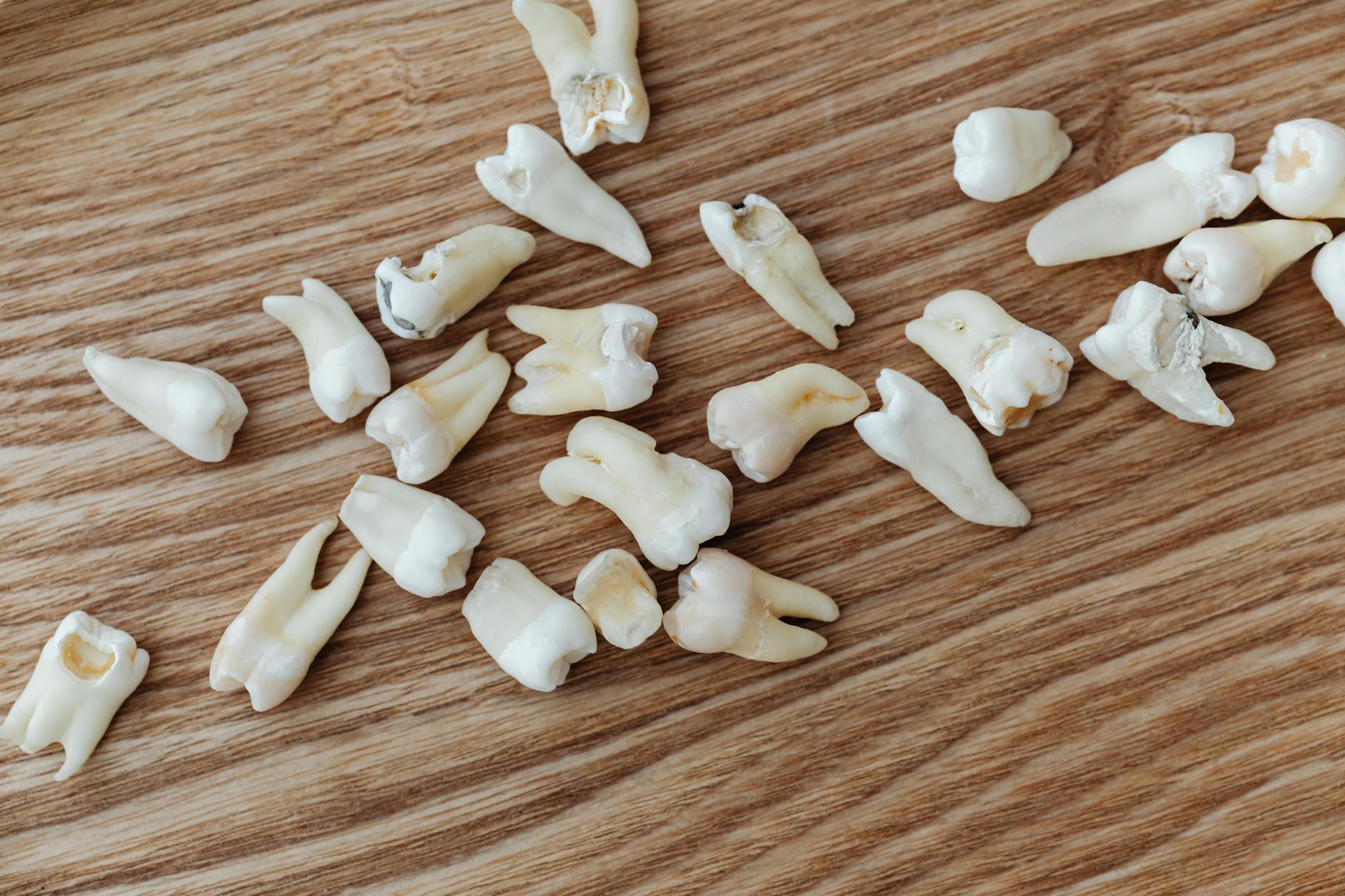
Gingivitis affects the gums without damaging the supporting structures beneath the teeth. It’s the earliest stage of gum disease. Inflammation is confined to the soft tissue. There’s no bone loss or pocket formation yet. The gums become red, swollen, and may bleed when brushing. Despite these symptoms, teeth remain stable in the socket. Pain is often absent, making it easy to overlook. Gingivitis usually results from poor oral hygiene and plaque buildup. It’s considered reversible with professional cleaning and consistent home care. No surgical treatment is needed unless complications exist. Timely intervention prevents progression into deeper gum problems.
Periodontitis develops when the infection spreads below the gumline
Periodontitis starts after gingivitis has gone untreated for too long. It marks a shift from inflammation to destruction. The infection spreads beyond the gum margins into connective tissue and bone. Pockets form as the gums detach from the teeth. These pockets trap bacteria and deepen over time. Bone supporting the tooth root begins to deteriorate gradually. This loss is not visible to the eye. Clinical probing and x-rays are required for diagnosis. Once bone is gone, the process is no longer reversible. Even with treatment, the structure may not return to its original state. Maintenance becomes lifelong.
Only gingivitis is fully reversible with routine cleaning
Gingivitis can be reversed by improving plaque control. That includes brushing, flossing, and dental cleanings. Once plaque is removed, inflammation typically resolves within days to weeks. Gum tissue returns to its normal color and texture. Bleeding during brushing stops. The reversal depends entirely on plaque removal. No medication is usually necessary in this phase. Patients who address gingivitis early avoid complications and surgery. Reversal becomes harder when inflammation is allowed to persist. Periodontitis, once it starts, cannot be fully reversed. It can only be managed and stabilized, not undone. This is the key point of differentiation.
Periodontitis causes permanent loss of support structures
In periodontitis, the damage extends beyond soft tissue into the deeper anatomy. The periodontal ligament breaks down. Alveolar bone begins to erode around the tooth roots. Once this occurs, the attachment cannot be restored naturally. Teeth may become mobile, shift position, or even fall out. Recession often becomes visible as the gums shrink. Tooth sensitivity becomes more common due to exposed roots. These symptoms do not improve with brushing alone. Surgical intervention is frequently required to control the disease. Even with surgery, not all lost structures can be recovered. Prevention is easier than repair in this stage.
Pocket depth is a key clinical difference between the two
Gingivitis does not create periodontal pockets. The gums may swell, but they remain attached to the teeth. Pocket depth stays within the normal range of 1–3 millimeters. In contrast, periodontitis features pockets deeper than 4 millimeters. These pockets harbor bacteria, food debris, and calculus. Deep pockets are harder to clean with home tools. Dentists use probes to measure pocket depth during exams. It’s one of the main indicators of periodontal breakdown. As the pockets increase, the risk of tooth loss grows. Gingivitis can be diagnosed visually, but periodontitis requires clinical probing and radiographs.
Gum bleeding occurs in both conditions but has different implications
Bleeding gums are common in both gingivitis and periodontitis. However, their meaning changes with context. In gingivitis, bleeding results from surface-level inflammation. The gums react to plaque and become fragile. In periodontitis, bleeding is a sign of deeper infection. The tissue bleeds more easily due to bacterial invasion. Pus may accompany bleeding in severe cases. Bleeding while flossing or brushing is never normal. Its presence suggests a breakdown in gum health. The difference lies in the extent of involvement. Bleeding alone cannot determine disease stage. It must be interpreted alongside pocket depth and x-ray findings.
Halitosis may appear at both stages depending on bacterial load
Bad breath is often one of the first symptoms patients report. It results from bacterial byproducts. In gingivitis, mild halitosis may occur intermittently. As the bacterial load increases, the smell becomes stronger. In periodontitis, bad breath becomes more persistent. Deep pockets harbor anaerobic bacteria, which release sulfur compounds. These compounds have a characteristic foul odor. Regular brushing cannot eliminate it. Mouthwash offers temporary relief but doesn’t address the source. If halitosis remains after brushing and flossing, further evaluation is needed. Odor alone doesn’t confirm periodontitis, but it often accompanies it. Dentists assess overall hygiene and tissue condition together.
Tooth mobility is only associated with periodontitis
Teeth do not become loose in gingivitis. The supporting bone and ligament remain intact. In periodontitis, mobility becomes a clinical concern. Bone loss reduces the anchoring strength of each tooth. Movement during chewing or brushing indicates significant attachment loss. It may start with slight wiggling, then progress over time. Mobile teeth may require splinting or extraction. Mobility does not improve without advanced treatment. This includes scaling, surgery, and in some cases, prosthetic replacement. Monitoring tooth stability is essential for tracking progression. Stability in gingivitis is a sign of early-stage inflammation. Movement signals irreversible damage.
Gingivitis rarely requires surgical intervention
Standard treatment for gingivitis involves non-invasive cleaning and behavior change. The dentist removes plaque and tartar from visible areas. Patients are educated on brushing techniques and flossing routines. Antibacterial rinses may be prescribed short-term. No anesthesia or incision is required. Symptoms usually resolve without complications. In contrast, periodontitis often needs surgical procedures. These include flap surgeries, bone grafting, or guided tissue regeneration. Surgery becomes necessary when pockets are too deep for instruments to reach. The decision depends on pocket depth, bone level, and bleeding index. Surgery can improve access but cannot undo earlier damage.
The presence of tartar below the gums suggests advanced disease
In gingivitis, plaque and tartar are usually limited to visible surfaces. Supragingival scaling is often sufficient. When tartar extends below the gumline, it signals a deeper infection. Subgingival calculus is a hallmark of periodontitis. It forms in pockets that can’t be cleaned at home. Removing subgingival tartar requires ultrasonic scalers or manual curettes. Deep cleaning sessions may be divided into multiple appointments. Local anesthesia is often used for comfort. Patients with subgingival calculus need close monitoring afterward. The risk of recurrence is higher in these cases. Maintenance plans are usually more aggressive than for gingivitis.
Periodontitis is more strongly linked to systemic health risks
While both conditions involve oral inflammation, periodontitis has broader health implications. Studies link periodontitis to cardiovascular disease and diabetes. The connection lies in chronic inflammation and bacterial entry into the bloodstream. Gingivitis does not typically elevate systemic markers. Periodontitis can raise C-reactive protein and other inflammatory signals. This adds to the patient’s overall disease burden. Medical professionals increasingly view periodontitis as a risk factor. Pregnant women with periodontitis face increased chances of low birth weight. Managing oral inflammation is part of systemic disease prevention. Gingivitis doesn’t carry these associations. The systemic link is specific to advanced gum disease.
Regular dental exams help distinguish between the two conditions
Because symptoms can overlap, professional assessment is essential. Dentists use specific tools to evaluate gum health. These include periodontal probes, radiographs, and mobility scoring. Visual inspection alone is not enough for diagnosis. Patients may not report symptoms unless prompted. Even advanced cases may be painless. That’s why routine checkups are vital. Exams allow early detection before damage becomes irreversible. Gingivitis can be spotted early and addressed quickly. Periodontitis requires more complex evaluation and planning. Understanding the difference helps guide treatment and follow-up. Timely diagnosis changes the outcome dramatically.
